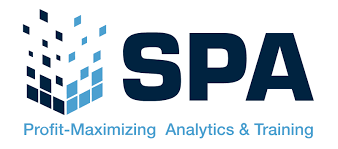ATD Blog
What Sales Leaders Must Consider When Creating Training Assets
Wed Sep 18 2019

Did you know Google keyword queries for "sales training videos," "best sales videos on YouTube," "sales videos for success," and "phone sales training videos" are up 350 percent since last year? If leaders are providing the tools and resources, why has this number jumped? Has a new group of college grads just started their first sales jobs, or are we not answering the questions salespeople have fast enough and in a format they can easily find and use?
Our salespeople need the tools and training to have:
the right value-adding conversations
with the right customers
in the proper format
with the right purpose (intent)
at the right terms
at the right time.
The Right System Needs the Right Tools
At SPA, we asked sales enablement leader Mike Kunkle to define sales productivity. He shared, "the output of the sales force over a given time period." As Mike stated in a prior post, we need to take a systems thinking approach to sales enablement. The right tools are essential to making this approach functional. Let’s take a closer look at what they are.
Video
More than ever, training is offered via video. Why? Because videos enhance traditional online learning, and they appeal to the learners of the YouTube generation. That’s due in large part to their flexibility. Videos can be an effective means to share anything from simple onboarding information to complex technical product details. What’s more, they can be accessed in multiple ways. It’s no surprise that, according to Forrester Research, "people are 75 percent more likely to watch videos than to read print."
Mobile Learning
People learn using their mobile devices every day in their personal lives. Albeit slowly, mobile learning will become a part of the typical workday, providing just-in-time learning experiences that are repeatable to ensure retention. For instance, salespeople can sit in the parking lot of their next customer appointment and learn something while they are waiting for the appointment time to arrive. Or, a rep can revisit key video-based learning on negotiations right before a meeting to refresh their prior learning.
Virtual Reality and Augmented Reality
Virtual reality (VR) and augmented reality (AR) are here, and there is plenty of research hyping the benefits of using VR and AR for training. But how does that play out in the real world of selling? For starters, reps need to be able to convey a vast amount of product information to potential buyers. An interactive AR or VR product demo enables them to explore every feature and function on their own.
More importantly, a VR simulation can allow sales reps to practice different techniques and strategies in a realistic but safe environment. They can role play high-stakes situations, such as selling to directors or at a trade show, as often as they like until they are confident with an approach.
Microlearning
If you are not practicing microlearning in your sales training today, you are already behind. Learners respond positively to microlearning because they can learn and still manage their time in a workday. In practice, microlearning uses a chunking approach by which topics are grouped into mini topics and taught one at a time.
Let’s say prospecting is a topic, and within prospecting you want them to learn how to find new customers that match your ideal customer profile and network, and are on social media. In this example, you could create three microlearning courses: one on your ideal customer profile, one on networking, and one on social media.
Social Learning
There is increasing interest in social learning (sometimes called informal learning or peer-to-peer learning), and I predict this type of learning will continue to become more common. Social learning is where a learner gains knowledge and skills through nontraditional methods such as email, face-to-face and online conversations, social media, videos of peers completing application exercises, and discussion boards. Today's learners have grown up using social learning in their everyday lives, so it is essential to incorporate it into corporate learning.
The Shift in Training Concentration
Most sales training programs focus heavily on product feature, benefit, and application training. In fact, some training programs have spent as much as 80 percent of the training time focused on product training but only 20 percent on sales and soft skills development. As born-digital Millennials and Generation Z make up a growing percentage of the workforce, however, companies are recognizing a skills gap in basic human-to-human interaction capabilities like communication and collaboration skills. Social learning, microlearning, and AR/VR simulations are prime opportunities to boost these critical skills.
The Future Is Now
The systems, tools, and the training mix are just some of the many considerations a sales enablement leader needs to contemplate as they approach the creation of assets. Indeed, as we look to the future, we are already seeing scenarios where learning content is becoming more relevant and accessible. In some organizations, trainees already have personalized learning plans based on assessments and required skills with skills gaps already identified. In other words, they have a scenario where trainees "own" their training.
The goal is that learning is a continuous process. In particular, salespeople will have new learning plans each year. As they manage and complete their training, they will improve their value to the organization and give their customers the best experience possible.
If you would like to learn more about the new ways we can train our salespeople, download our e-book, 17 Innovations for Relentless Sales Improvement.

